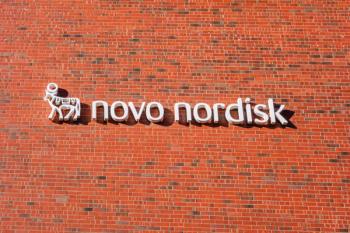
- Drug Topics February 2023
- Volume 167
- Issue 02
NexoBrid for Eschar Removal in Thermal Burns
Anacaulase-bcdb improves current standard of care for deep partial thickness and/or full thickness thermal burns.
On December 28, 2022, the FDA granted approval to anacaulase-bcdb (NexoBrid) for eschar removal in adults with deep partial thickness (DPT) and/or full thickness (FT) thermal burns.1 Current standard of care for DPT and/or FT burns includes excisional debridement and autografting,2 which comes with risks of serious complications. Eschar removal is critical to this step, often requiring a surgical approach. Nonsurgical approach has historically been limited to minimally elective topical agents, requiring significant time for elect. Anacaulase-bcdb is a bromelain-based, proteolytic enzyme concentrate that, when applied, dissolves burn wound eschar in a nonsurgical setting.3
Efficacy
Anacaulase-bcdb has been evaluated in 2 clinical trials. The phase 3 DETECT clinical trial (NCT02148705) compared anacaulase-bcdb with standard of care (SOC) and gel placebo in a 3:3:1 ratio in adult patients with DPT and/or FT burns up to 30% total body surface area (TBSA) in a topical treatment period. Among 169 adult patients, the incidence of greater than 95% eschar removal at the end of the topical treatment period was 93% and 4% in the treatment and gel arms, respectively (treatment diference, 89%; 95% CI, 74%-96%). The incidence of surgical eschar removal in the treatment group was 4% vs 72% among those treated with SOC (treatment diference, –68%; 95% CI, –78% to –56%). Median time to eschar removal was 1 vs 4 days in the treatment arm vs SOC group; median time for wound closure was 31 and 36 days, respectively.4
The second study was a multicenter, open-label, randomized, 2-arm study (NCT00324311) of patients with DPT and/or FT burns of 5% to 24% TBSA; efcacy was evaluated in DPT burns. A total of 156 patients were randomly assigned to the treatment or SOC groups. Incidence of surgical eschar removal was 22% and 77% in each group, respectively (treatment diference, –55%; 95% CI, –71% to –38%). Median times to greater than 95% wound closure were 33 and 24 days in each group, respectively.2
Safety
Across both clinical trials, only 2 adverse events were reported at greater than 10%. Pruritus was reported in 15% of treatment patients and 13% of SOC patients, whereas pyrexia was reported in 12% and 9% of patients in each group.
Postmarketing safety data remain limited. Safety and efectiveness of anacaulase-bcdb has not been established in chemical or electric burns; burns on the face, perineum, or genitalia; feet burns of those with diabetes or those with occlusive vascular disease; circumferential burns; or burns in patients with signifcant cardiopulmonary disease including inhalation injury. Additionally, anacaulase-bcdb is not recommended in wounds with radioactive and/or hazardous substances.
Dosing and Administration
Anacaulase-bcdb is supplied as 2 components, a lyophilized powder and a gel vehicle to be mixed prior to administration. Vial components come in 2 g (mixed in 20 g of gel) or 5 g (mixed in 50 g of gel). Drug preparation should be done at the patient’s bedside within 15 minutes of anticipated application. Anacaulase-bcdb should completely cover the burn wound area, be covered with a sterile occlusive flm dressing, and be appropriately dressed with a sterile loose, thick, and fufy dressing and secured with a sterile bandage. The dressing should remain on the wound for 4 hours, followed by appropriate removal procedures.
Patients may require a second application of anacaulase-bcdb if the wound area is more than 15% BSA, if there are logistical reasons for a second application (ie, body position), or if the removal of the frst application was not complete. If considering a second application, anacaulase-bcdb may be reapplied 24 hours following the frst application.1
References
1. NexoBrid. Prescribing information. Vericel Corporation; 2022.Accessed January 9, 2023.
2. Rosenberg L, Krieger Y, Bogdanov-Berezovski A, Silberstein E, Shoham Y, Singer AJ. A novel rapid and selective enzymatic debridement agent for burn wound management: a multi-center RCT. Burns. 2014;40(3):466-474. doi:10.1016/j.burns.2013.08.013
3. NexoBrid: disruptive therapy for burn care. MediWound. Accessed January 9, 2023.
4. A study to evaluate the efficacy and safety of NexoBridin subjects with thermal burns. ClinicalTrials.gov. Updated February 19, 2019. Accessed January 9, 2023.
Articles in this issue
almost 3 years ago
Drugs to Watch: 15 Potential Blockbuster Drugs in 2023almost 3 years ago
New-Onset Autoimmune Diagnoses After COVID-19almost 3 years ago
The Trouble With Satisfactionalmost 3 years ago
New Year Begins With Hikes in Drug Pricesalmost 3 years ago
Technology Trends to Prevent Prescription Errorsalmost 3 years ago
Can Patient-Centered Prescription Labels Increase Medication Adherence?almost 3 years ago
Managing Wintertime Psoriasis Flaresalmost 3 years ago
High Demand Keeps Some Diabetes Medications in Short Supplyalmost 3 years ago
New Study Demonstrates Empagliflozin Effectiveness in Pediatric T2DNewsletter
Pharmacy practice is always changing. Stay ahead of the curve with the Drug Topics newsletter and get the latest drug information, industry trends, and patient care tips.

















































































































